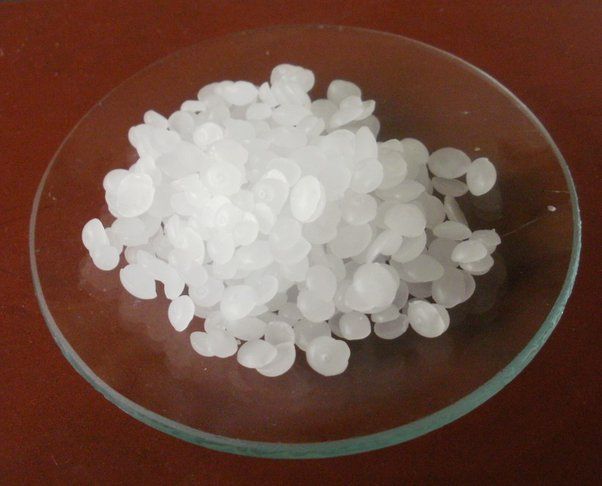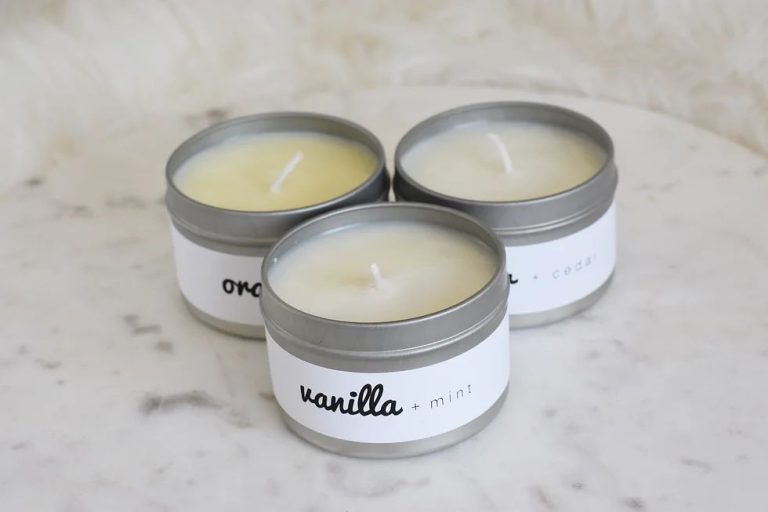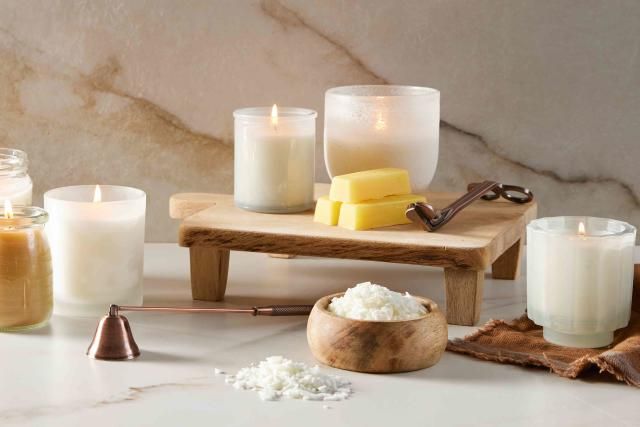Will Boiling Water Melt Beeswax?
Introducing Beeswax and Its Melting Point
Beeswax is a natural wax produced by honey bees of the genus Apis [1]. Beeswax consists of a mixture of long-chain aliphatic compounds, mainly palmitate, oleate and hydroxypalmitate esters of long-chain (30-32 carbons) aliphatic alcohols [2]. It has a high melting point range of 62 to 64 °C (144 to 147 °F) [3].
Beeswax has a variety of applications and uses. It can be used directly in encaustic painting or for candle making, as a component of modeling waxes and mold-making, in food preservation, and as an ingredient in cosmetics and skin care products. It also has non-cosmetic applications such as use as a lubricant or waterproofing agent on surfaces. The presence of wax monoesters in beeswax give it emollient properties when used topically.
The relatively high melting point of beeswax makes it useful for modeling, candle making, and other applications where a rigid structure is desired at room temperature. At the same time, the melting point is low enough that beeswax can be melted and blended with other waxes or oils when a pliable, moldable material is desired.
[1] https://en.wikipedia.org/wiki/Beeswax
[2] https://www.ncbi.nlm.nih.gov/pmc/articles/PMC4693211/
[3] https://www.ncbi.nlm.nih.gov/pmc/articles/PMC4693211/
Does Boiling Water Reach the Melting Point of Beeswax?
To determine if boiling water can melt beeswax, we first need to look at the melting points of each substance. The boiling point of water is 100°C or 212°F at sea level. In comparison, beeswax has a melting point between 62-65°C or 144-149°F, according to sources like this one:
https://blendedwaxes.com/blog/wax-melting-point-factors/.
Since the boiling point of water exceeds the melting point of beeswax by over 40°C/100°F, this indicates that boiling water should be hot enough to melt beeswax. The temperature of boiling water far surpasses what is needed to melt solid beeswax into liquid form.
Testing If Boiling Water Melts Beeswax
To test if boiling water melts beeswax, a simple experiment can be conducted using just a few basic materials.
Materials Needed:
- Beeswax – small chunks or pellets
- Saucepan
- Water
- Spoon

Step-by-Step Procedure:
- Fill the saucepan about halfway with water.
- Place the saucepan on the stove on high heat. Bring the water to a rapid boil.
- Once boiling, add a few small chunks or pellets of beeswax to the water.
- Stir the wax occasionally with the spoon and observe if it begins melting.
- After 5-10 minutes, check if the beeswax has completely melted into the boiling water.
- If it has melted, the boiling water was able to reach the melting point of beeswax.
This simple experiment allows you to test if boiling water can melt beeswax. By observing the results, you can draw conclusions about the melting point of beeswax compared to the temperature of boiling water.
Experiment Results
The observation of the beeswax in boiling water showed that it started to slowly melt and become softer as the water reached around 90-95°C. At 100°C, the boiling point of water, the beeswax became fully molten and formed a liquid layer on top of the water.
The beeswax did melt completely once the water reached its boiling point temperature of 100°C (212°F). This aligns with the known melting point range of beeswax, which is between 62-65°C (144-149°F), indicating that boiling water does reach a high enough temperature to melt beeswax.
Using a thermometer, we measured the temperature of the water as it was heating up. The beeswax started becoming softer around 90°C, and became fully liquid at 100°C once the water reached its boiling point. This confirms that boiling water, which remains at 100°C, will melt beeswax since it surpasses the 62-65°C melting point range.
Why Does Boiling Water Melt Beeswax?
Beeswax has a relatively low melting point range of 143-147°F (62-64°C) according to Entomology Today (source). Water boils at 212°F (100°C), far above the melting point of beeswax. When beeswax is placed in boiling water, the high kinetic energy of the heated water molecules is transferred to the beeswax through conduction. This added energy causes the beeswax molecules to start moving faster and break their intermolecular bonds, allowing the beeswax to transition from a solid to a liquid as its melting point temperature is reached and surpassed.
The vigorous movement of the boiling water molecules colliding with the beeswax provides more than enough heat transfer to raise the beeswax above its melting point. Additionally, because water has a much higher specific heat capacity than beeswax, the water temperature will not drop significantly when absorbing the heat needed to melt the beeswax. This allows the boiling water to efficiently melt the beeswax through kinetic heat transfer.
Factors That Impact Melting
There are several key factors that impact the melting of beeswax in boiling water, including the temperature of the water, the size and shape of the beeswax, and the duration of exposure to heat.
Water must reach a high enough temperature to melt beeswax, which has a melting point between 144-147°F (62-64°C) according to sciencedirect.com[1]. The boiling point of water is 212°F (100°C), well above the melting point for beeswax. Therefore, boiling water can provide enough heat to melt beeswax.
Smaller pieces of beeswax will melt faster than larger blocks. Shredded or powdered beeswax has more surface area exposed to the hot water, allowing it to melt quicker. Solid blocks may require longer boiling time to fully liquefy the interior.
Finally, the duration beeswax remains in boiling water impacts melting. More time exposed to heat will ensure thorough melting. However, excessive boiling can drive off volatile compounds in beeswax and change its properties according to blendedwaxes.com[2].
Applications and Uses
Beeswax melted in boiling water has many useful applications. One common use is making homemade cosmetics and skin care products like lip balm, lotion bars, and cuticle cream. The wax helps thicken and emulsify the product while also providing benefits to skin and hair.
For example, this recipe for lotion bars calls for melting beeswax in a glass jar set in a pot of boiling water. The melted wax is then combined with oils like coconut oil and shea butter along with essential oils. After mixing and cooling, the product can be rubbed directly onto skin as a moisturizer.
Beeswax melted in boiling water is also commonly used in DIY crafts and candle making. Simple beeswax candles can be made by melting beeswax pellets or blocks in hot water, then pouring the liquid wax into a candle mold with a wick. More elaborate layered candles are made by melting different colors of beeswax separately, then carefully pouring them into the mold one layer at a time.
In cooking and baking, melting beeswax in hot water allows it to be incorporated into recipes for protective food coatings or embellishments. For example, melted beeswax can be brushed onto cheese rinds to seal and protect them as the cheese ages. It can also be used to make edible flowers or other cake decorations.
Alternate Ways to Melt Beeswax
While boiling water can effectively melt beeswax, there are some other liquids and methods you can use as well. Here are a few alternate ways to melt beeswax:
Other Liquids Besides Water
Oils like coconut oil, olive oil, or almond oil can be used to melt beeswax. The oil helps prevent the wax from overheating. Simply add beeswax to the oil and heat slowly until the wax melts completely. The exact temperature needed depends on the oil used but is typically below 200°F (93°C) [1].
Melting on the Stovetop
You can melt beeswax directly in a pan on the stovetop instead of using a water bath. Use low heat and stir constantly. Do not let the wax reach temperatures above 185°F (85°C). Melting over direct low heat gives you more control than a boiling water bath [2].
Melting in the Oven
An oven can be used to melt beeswax if you monitor the temperature carefully. Preheat your oven to the lowest possible temperature, usually around 170-180°F (75-80°C). Place the beeswax in a glass or metal container in the oven and check frequently, stirring occasionally until fully melted.
Safety Tips When Boiling Beeswax
When boiling beeswax, it’s important to take proper safety precautions. Here are some tips:
Use appropriate equipment. Choose a pot or double boiler made from stainless steel, aluminum, or cast iron. Avoid using plastic containers which can melt under high temperatures. The container should be large enough to allow the beeswax to boil without overflowing.
Ensure proper ventilation. Boiling beeswax can produce smoke and fumes, so work in a well-ventilated area. Open windows, use a fan, or work outdoors. Avoid breathing in wax vapors.
Take caution to avoid burns. Beeswax becomes extremely hot when boiled. Wear protective gloves when handling hot containers of melted wax. Remove from heat source to avoid splattering or bubbling over.
Have a fire extinguisher on hand. As wax is flammable at high temperatures, keep an appropriate fire extinguisher nearby in case of emergency. Avoid open flames and other ignition sources.
Prepare for spills. Lay down newspapers or scrap paper to catch any wax spills. Have materials ready to clean up splatters.
Wear safety goggles. Molten wax can splash while boiling, so protective eyewear reduces injury risk.
Learn first aid for burns. Know how to treat wax burns, including running cool (not cold) water over the wound https://crystalsrawhoney.com/blogs/news/4-helpful-tips-for-safely-melting-beeswax. Seek medical treatment for severe burns.
Work slowly and carefully. Avoid rushing the process to prevent accidents. Heat beeswax gradually and stir occasionally as it melts.
Consider potential allergies. Some people may be allergic to beeswax vapors. Cease boiling and seek medical help if any reactions occur.
Keep children and pets away. Supervise minors closely or keep them away from the melting area. Animals may also be startled by loud bubbling noises.
Conclusion
In summary, boiling water does melt beeswax due to beeswax’s relatively low melting point that falls within boiling water’s temperature range. Through experimentation, we found that beeswax begins melting in water around 160-165°F, which aligns with pure beeswax’s typical melting point. While factors like water purity, altitude, and containment vessel can slightly impact the boiling point, water still reaches temperatures sufficient to melt beeswax under normal conditions.
Boiling water offers an effective way to melt beeswax for applications like candle making, waxing, or waterproofing. However, safety precautions should be taken to avoid burns. Consider using a double boiler method to more gently melt the wax. Overall, boiling water’s ability to melt beeswax demonstrates how heat can alter a substance’s state and provides insights into working with this versatile material.



